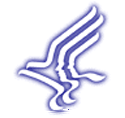|
|
 News
Articles News
Articles
Opportunities and Resources
Advice Corner
New Initiatives
|
News Articles
|
 |
Grants to Get Shorter First Years, New Anniversaries
As we've done for the past several years, we are resetting anniversary dates for many new and renewal grants in FY 2005. This means that the first year of your award will get shorter with some budgetary effects -- more on that below -- and the anniversary date will change for the life of your grant.
We must make this move to more evenly distribute grant funding throughout the fiscal year, addressing concerns of the Office of Management and Budget and Congress.
Who's affected? All R01, MERIT award, program
project, and cooperative
agreement applications
approved for four or five years of support and having start dates
from April 1 to September 30, 2005, will get new anniversary dates.
Excluded are three-year R01s and other short-term awards, such as
small grants (R03 and R21), SBIR and STTR awards, conference
grants, AREAs,
and fellowships.
Two-tiered approach
If your grant is one of those affected, you will be subject to one of two procedures, depending when your grant is approved for funding.
Three-Month Rollback
- Award to start April 1 through July 1.
Applies to unsolicited R01,
MERIT award, program project, and cooperative agreement applications.
- Anniversary date set back three months.
- Three-month reduction in first year for personnel costs only.
Six-Month Rollback
- Award to start mid-July or later.
- Applies to unsolicited R01, MERIT award, program project,
and cooperative agreement applications and those responding to
an
RFA or
PA.
- Anniversary date set back six months.
- Six-month reduction in first year affecting all recurring cost budget categories except travel, equipment, and alterations & renovations. Equipment and A&R will be fully funded at the scientific review group-recommended level. Travel may be reduced; please discuss with your grants management specialist.
Note new dates
Resetting a grant's anniversary date will change the timing of your noncompeting and renewal awards. Your initial award will be for nine or six months, moving up the start date of your noncompeting award. For example, if an initial four-year award due to start on June 1, 2005, is reduced by three months, the first year award will end on March 1, 2006, and all future anniversary dates will also move to March 1.
The total project period also gets shorter. In the example above, funding ends in March 2009. If this grant is recommended for four years of funding, it will ultimately receive a 3.75-year award. See the Resetting the Noncompeting Grant Start Date table for an illustration of how this works. Your grants management specialist will discuss your funding level with you before award.
As noted above, the new anniversary date changes the dates for
your annual progress
reports and for reapplying for your next grant. For an award
ending March 1, your progress reports will be due on January 15
if it's eSNAP or
January 2 for non-eSNAP. (Progress reports are due 45 days before
a grant's anniversary date for eSNAP applications, 60 days for
non-eSNAP.)
And to renew that grant ending on March 1, you will need to submit
your renewal application by June 1, 2008, at the latest. But earlier
is better -- see the next section.
Apply earlier
You can mitigate some of the effects of having your start date
changed by applying earlier. Submitting your application for review
earlier
is a good strategy long used by savvy applicants. See our Early
Grant Awards Questions and Answers for more information.
|
 |
No Bad Weather Blues for Snowed-In Applicants
If snow and ice have frozen you out of your workplace, here's
some heart-warming news. You can send your application to NIH
late if your institution closed during the recent storms. Read
the March
2, 2005, NIH Guide notice, and find more details in Can
I send in my application late? in our Applying
for a Grant Questions and Answers.
|
 |
For Federalwide Assurances, One Shoe Fits All
More changes are afoot for human subjects assurances. The Office
for Human Research Protections eliminated many assurance
types and will accept only a Federalwide
Assurance form (FWA) after adding a Web update capability
-- see our February 2005 article "Update
Federalwide Assurances and IRB Registrations
Online." Organizations with a Multiple Project Assurance
or Cooperative Project Assurance must switch to an FWA by December
31, 2005.
If your institution has an FWA, the revised FWA
Terms of Assurance will go into effect the next time you
either update or renew. Revised FWA forms and instructions
as well as those for IRB/IEC registration are online at OHRP.
Single Project Assurances are a bit different: they can stay in effect for a project's duration. And OHRP is replacing all types of independent investigator agreements with the Individual Investigator Agreement (IIA). If you already have an IIA, you can keep it until you finish the research, or you can replace it with the new type or other written agreement developed by an assured institution. For individual investigators, OHRP posted Guidance on Extension of an FWA to Cover Collaborating Individual Investigators and the IIA. |
 |
Learn the Ins and Outs of IACUC Reporting
NIH's Office of Laboratory Animal Welfare just published new guidance to help institutional animal care and use committees and institutional officials determine which research animal situations should be reported and how
to report them. Read the February 24, 2005, Guide notice for the full scoop.
|
 |
Contact Info on Our Site Has Changed
The Research Funding site had maintained
a program officer list, but we've recently removed it to avoid
redundancy with NIAID's official staff list. Instead, find
staff lists by division at Contact Staff for Help.
|
Opportunities and Resources
|
 |
HIV Innovation Small Grant Opportunities Are NOT Expiring
Though our program announcement for Innovation Grants for AIDS Research has expired, we're not worried, and neither should you. Even if your innovative HIV-related research idea is early-stage, you can still submit under the general NIH PA
NIH Exploratory/Developmental Research Grant Award (R21).
The Innovation Grants program has been highly successful, supporting about 108 grants to date, and we're looking for more applications.
When you apply, don't forget to designate the PA number, PA-06-181,
on your Face Page -- see our article "Small
Grants, PAs, Investigator-Initiated Research -- Let Us Explain."
You must have that PA number even though these R21s fund investigator-initiated
research. And if your nascent idea is vaccine-related, check out
the Innovation
Grant Program: Approaches in HIV Vaccine Research PA -- it's
still active. |
 |
Looking for a Contractor to Create a New Data Analysis and Coordinating Center
NIAID expects to award a five-year contract to create and manage a Data Analysis and Coordinating Center for the Tri-Service AIDS Clinical Consortium (TACC). This multisite study explores the natural and treated histories of HIV infection in the active-duty U.S. military community.
As announced in the TACC
request for proposals, NIAID is seeking proposals from
qualified offerors, with the goal of awarding a cost-reimbursement
contract
around November 15, 2005.
This cooperative effort started in 2002, when the U.S. military
and NIAID created a consortium with
military centers conducting research of HIV-infected military members
and
their dependents. The consortium is now seeking the services of
a data center to support scientific leadership in HIV/AIDS research
and provide expertise in epidemiology and biostatistical methods
that optimize analyses of longitudinal cohort data.
In addition, the contractor will provide technical expertise in data collection, management, and quality assurance. Supporting TACC's scientific leadership, the new Center will play a dynamic role with the consortium's investigators, helping to set scientific priorities and timelines.
You can find the full RFP at
FedBizOpps, which we link to from our contracting site at RFPs
and Amendments. You may also call Contracting Officer Barbara
Shadrick at 301/496-7288, or email her at bs92y@nih.gov. |
 |
NIAID Keeps Its Sights on Health Disparities
NIAID has long been committed to eradicating health disparities.
Now you can read about some of the strides
we've taken in a new Black Bag article in the Journal
for Minority Medical Students.
Focusing on our multifaceted approach to improving the health of minority populations, the report covers our efforts to recruit minorities and women in clinical studies, expand numbers of minority scientists, and stimulate interest in biomedical research among minority youth. Black Bag also spotlights minority researchers and students as well as NIAID's Office of Special Populations and Research Training.
For more information, read the full report "Reaching
Out to Reduce -- and Eliminate -- Health Disparities." |
Advice Corner
|
 |
Frameless Linking to 398 Instructions
If Web pages with frames drive you to distraction, here's a way to deal with them that works with the new PHS 398 HTML instructions as well as other frames on the Web. In addition to a viewing advantage, the biggest plus is you can make your browser display an actual link that you can bookmark or copy, something you cannot do while you are "framed."
First the traditional approach. NIH set up the PHS
398 instruction site so you can either access documents through
the table of contents or page through the whole thing. For the
latter, back and forward arrows move you page by page, and a "Hide
Navigation Pane" button makes the table of
contents disappear. This looks nice and gets you out of the frames
environment so
the browser displays the correct URL. However, to view the table
of contents and see the big picture navigation, you have to return
to the top and click "Hide Navigation Pane" again.
Here's a different method that gives you the best of both worlds: you can view linkable pages sans nav frame without having to scroll to the top to turn it off.
- Go to the HTML PHS 398 instructions.
- In table of contents, find the link to the instruction section you want.
- Right click the link, and select "open in new window."
Your new window will display a URL you can use as a link. |
 New
Initiatives New
Initiatives
|
 |
|